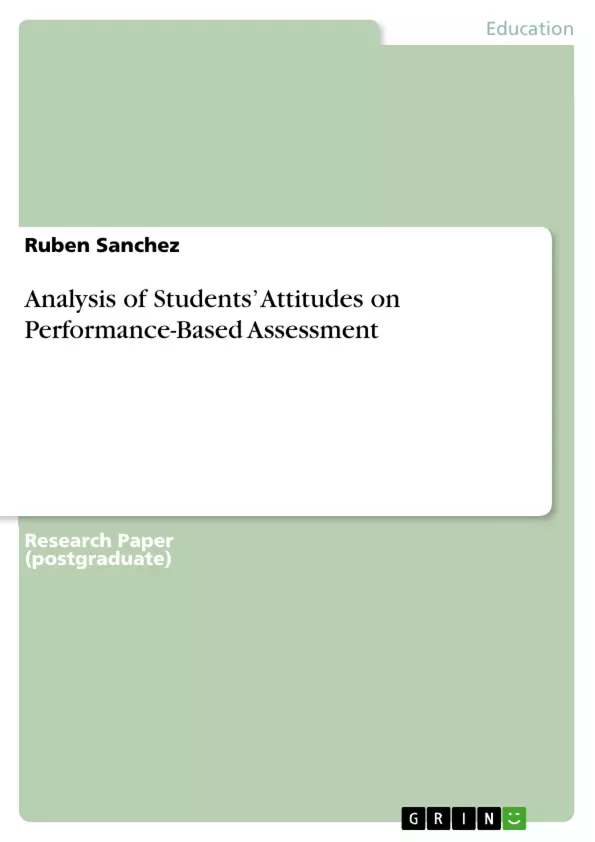Performance-based assessment is the thrust of Higher Education Institutions in the Philippines. Rural schools are faced with variety of pressures that are competing for attention within the community. This research assessed students’ attitudes towards performance-based assessment. It also aimed that instructional material will be developed. It utilized descriptive-quantitative research design and used weighted mean, t-test for two independent groups and Pearson r. Respondents of the study were 29 teachers and 238 students.
The assessment ratings of students towards their attitude on the four types of assessment is significantly different from the assessment ratings of the teachers. The assessment ratings of students towards their attitude on performance-based assessment is not significantly different from the assessment ratings of the teachers. The students’ attitude on the four types of assessment as assessed by the students have significant relationship with the students’ attitude on performance-based assessment. The students’ attitude on the four types of assessment as assessed by the teachers have no significant relationship with the students’ attitude on performance-based assessment. The school officials should encourage teachers to always exhibit positive teaching behavior to further learning of students. An instructional material can be developed emphasizing the usage of performance-based assessment tools.
Inhaltsverzeichnis (Table of Contents)
- Abstract
- Introduction
- Related Literature
- Outcomes-Based Education
- Assessment of Learning
- Types of Performance-Based Assessment
- Research Methods
- Findings and Discussion
- Conclusion
- References
Zielsetzung und Themenschwerpunkte (Objectives and Key Themes)
This research investigates students' attitudes towards performance-based assessment in rural Philippine schools. It aims to assess these attitudes and develop appropriate instructional materials. The research utilizes a descriptive-quantitative research design, employing a weighted mean, t-test for two independent groups, and Pearson r. The study examines the attitudes of both teachers and students.
- The impact of performance-based assessment on student learning in rural schools
- The effectiveness of different types of performance-based assessment in achieving desired learning outcomes
- The development of instructional materials to enhance the implementation of performance-based assessment
- The role of teacher training and support in facilitating the adoption of performance-based assessment practices
- The relationship between students' attitudes towards performance-based assessment and their academic performance
Zusammenfassung der Kapitel (Chapter Summaries)
- Abstract: This chapter provides a brief overview of the research, highlighting its purpose, methodology, and key findings. It emphasizes the importance of performance-based assessment in Philippine higher education and the need to assess students' attitudes towards this approach.
- Introduction: This chapter discusses the context of the research, focusing on the pressures faced by rural schools in the Philippines. It explores the shift towards performance-based assessment in higher education institutions and the need for effective instructional interventions. The chapter also outlines the rationale for the study and its specific objectives.
- Related Literature: This chapter reviews relevant literature on outcomes-based education, assessment of learning, and different types of performance-based assessment. It explores the theoretical framework underpinning the study, drawing on the work of experts like CHED and Navarro & Santos.
- Research Methods: This chapter details the research design, population, sampling techniques, data collection instruments, and data analysis methods used in the study.
Schlüsselwörter (Keywords)
The main keywords and focus topics of this text are higher education institutions, assessment, performance-based assessment, students' attitude, and instructional materials. These terms encapsulate the core concepts and themes explored in the research, highlighting the study's focus on the effective implementation and impact of performance-based assessment in rural schools.
- Arbeit zitieren
- Ruben Sanchez (Autor:in), 2020, Analysis of Students’ Attitudes on Performance-Based Assessment, München, GRIN Verlag, https://www.grin.com/document/520903



